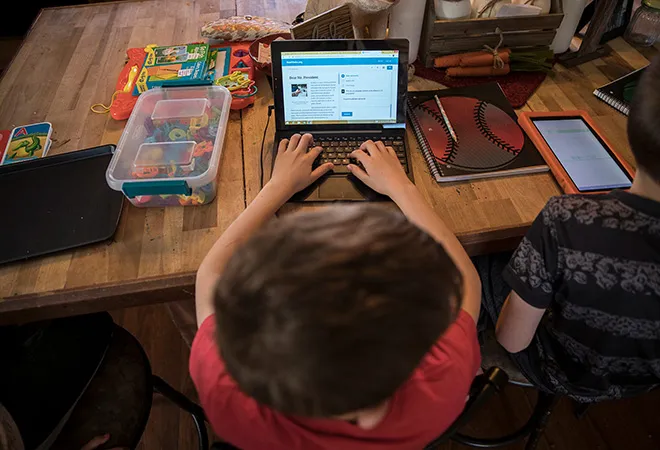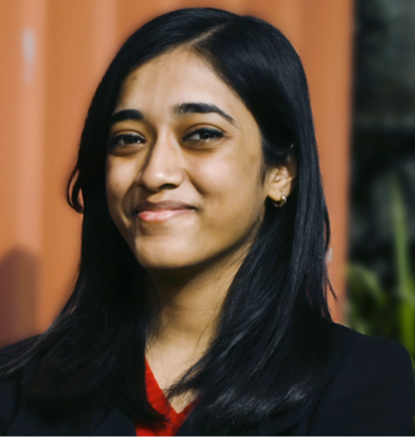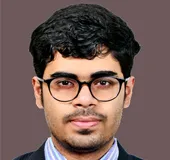-
CENTRES
Progammes & Centres
Location
By implementing focused protection instead of lockdowns, learning epidemics as seen during the COVID-19 period could be avoided in the future

India, a nation with a population of over 1.4 billion people, has faced immense challenges in managing the COVID-19 pandemic. While demographic vulnerabilities and relatively weak public health systems forced the country into a drastic nationwide lockdown, it was also important to consider the socio-economic implications associated with the various measures undertaken. One of the main challenges faced by Indians due to this lockdown is the immense learning loss. The term “learning loss” refers to any “specific or general loss of knowledge and skills or to reversals in academic progress, most commonly due to extended gaps or discontinuities in a student’s education.” The interruption in the education of a large number of students due to the COVID-19 lockdown has led to large-scale learning loss, to the extent that it is being called a learning epidemic. Learning loss can also have a catastrophic impact on the economy as well as other human development indicators, especially in the long run. According to a recent estimate, the impacted generation of students would lose US$17 trillion in lifetime earnings if immediate corrective action is not taken. Thus, this is an extremely important issue, and novel thinking is required to prevent repetition in future pandemics. This article explores the scope of focused protection as a viable alternative to stringent lockdowns, which could help prevent similar learning epidemics emanating from such crises in the future.
The interruption in the education of a large number of students due to the COVID-19 lockdown has led to large-scale learning loss, to the extent that it is being called a learning epidemic.
Focused protection, which advocates for targeted measures to safeguard vulnerable populations while allowing others to resume normal activities, albeit with proper precautions, presents a compelling case for India. Focused protection aims to prioritise and safeguard vulnerable populations through targeted interventions and localised implementation, such as enhanced protection in nursing homes, strict infection control in healthcare facilities, and prioritised vaccination for high-risk individuals. This approach acknowledges the socioeconomic implications of blanket restrictions and seeks to strike a balance between protecting public health and minimising economic distress by allowing lower-risk individuals to resume work under safety protocols. In India, focused protection can contribute to building immunity and achieving herd protection by gradually resuming normal activities for younger and healthier individuals, while maintaining an efficient and equitable vaccination campaign.
The closure of schools and disruptions in education has had a profound impact on India's youth. While it is difficult to quantify the loss in total learning for our country resulting from the lockdowns, it is not hard to anticipate that the ‘digital divide’ favoured the ‘laptop class’, not the general populace. Estimates suggest that these problems have materialised into quantifiable degradation of various educational skills in students. In the United States, an average 13-year-old's maths proficiency is falling back to levels last seen in the 1990s, according to the ), commonly known as the Nation's Report Card. Struggling readers performed worse than they did in 1971 when the test was first administered.
Focused protection aims to prioritise and safeguard vulnerable populations through targeted interventions and localised implementation, such as enhanced protection in nursing homes, strict infection control in healthcare facilities, and prioritised vaccination for high-risk individuals.
The case isn’t any different here in India. A survey conducted by Azim Premji University reported that at least one language ability has been lost by 90 percent of students, and at least one mathematical ability has been lost by 80 percent of students as a result of COVID-19. This has rightfully raised fears of severe learning poverty in India. The number of out-of-school children in rural India increased manifold, and access to online resources was severely biased against public schools.
Figure 1: Out of School children and online access in rural India
 Source: ASER (Rural) 2020 Wave 1
Source: ASER (Rural) 2020 Wave 1
The learning loss experienced in India due to the COVID-19 pandemic carries significant negative implications for the country's human capital and growth prospects. Learning loss can lead to a less skilled workforce, hindering productivity, innovation, and overall economic growth. Figure 2 demonstrates the long-run effects of learning loss on GDP. Additionally, marginalised communities and economically disadvantaged individuals are disproportionately affected, exacerbating existing social and economic inequalities. Without effective measures to address learning loss, India may face long-term consequences, including reduced human capital development and limited opportunities for socioeconomic advancement.
Figure 2: Long-run Loss in GDP Induced by Learning Loss
 Source: Hanushek and Woessmann (2015), Universal Basic Skills: What Countries Stand to Gain
Source: Hanushek and Woessmann (2015), Universal Basic Skills: What Countries Stand to Gain
In the context of future pandemics, a cautious evaluation of the risks linked to the educational institutions would be essential for a targeted protection strategy, instead of the umbrella lockdowns, irrespective of the severity (or lack thereof) of conditions in a particular locality. This approach would give priority to fulfilling the educational requirements of children and equipping them with the knowledge and skills essential for their future development. Some of the ways that focused protection can help fight against the learning epidemic are:
A caveat follows: Focused protection should not be viewed in isolation, but rather as part of a comprehensive strategy. While protecting vulnerable populations and allowing lower-risk individuals to resume activities, it is crucial to continue implementing complementary measures such as widespread testing, contact tracing, and community-wide preventive measures. This includes promoting mask usage, practising proper hygiene, and maintaining physical distancing. By combining focused protection with these measures, India can effectively mitigate the spread of the contagion and minimise the impact of future outbreaks.
While protecting vulnerable populations and allowing lower-risk individuals to resume activities, it is crucial to continue implementing complementary measures such as widespread testing, contact tracing, and community-wide preventive measures.
Implementing focused protection in India requires overcoming various challenges, especially keeping in mind future pandemics. It is crucial to accurately identify and categorise vulnerable groups and ensure their access to appropriate healthcare and support services. Equitable distribution of vaccines and testing resources is vital to ensure that targeted protection measures can be effectively implemented. Additionally, robust surveillance systems, localised strategies tailored to regional variations, and transparent communication are essential to build trust and ensure the cooperation of the population.
With its diverse population and complex socio-economic landscape, India requires a nuanced approach that prioritises the protection of vulnerable populations while balancing the economic and educational well-being of the majority. By implementing targeted measures, India can build immunity, protect the vulnerable, and achieve a balance between public health and socioeconomic stability. It is crucial for policymakers, healthcare professionals, and the community at large to work together and adapt strategies based on evolving evidence and the unique needs of the Indian population.
Anagh Chattopadhyay is a PhD candidate at the Johns Hopkins Bloomberg School of Public Health, Maryland, US.
Debosmita Sarkar is a Junior Fellow at the Centre for New Economic Diplomacy at Observer Research Foundation.
The views expressed above belong to the author(s). ORF research and analyses now available on Telegram! Click here to access our curated content — blogs, longforms and interviews.

Debosmita Sarkar is an Associate Fellow with the SDGs and Inclusive Growth programme at the Centre for New Economic Diplomacy at Observer Research Foundation, India. Her ...
Read More +
Anagh Chattopadhyay has completed his M.Stat from Indian Statistical Institute Kolkata India and is currently a PhD candidate at the Johns Hopkins Bloomberg School of ...
Read More +